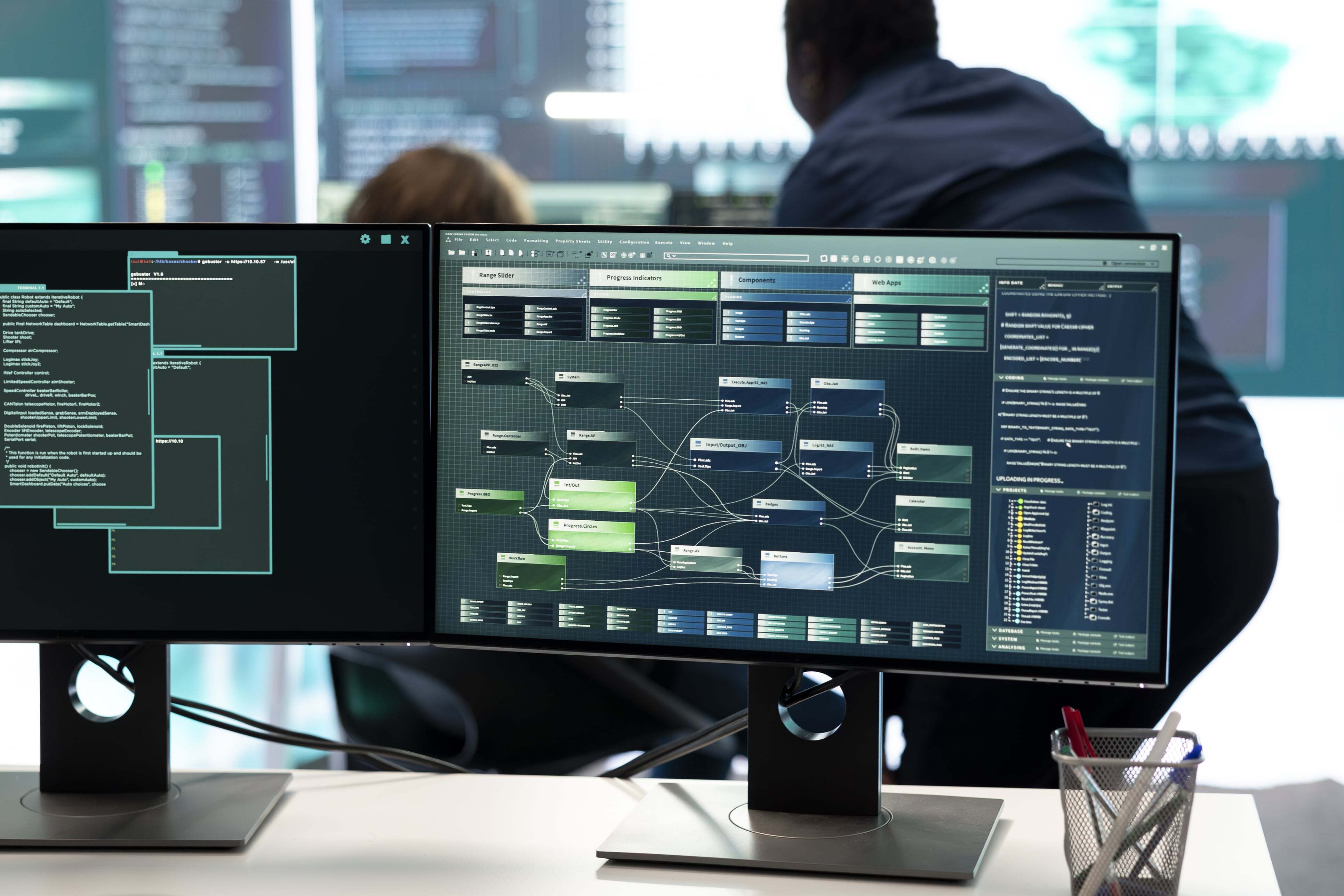What is the critical path to managing cyber threats effectively in your business? Cybersecurity risk management provides the strategic framework that safeguards your digital assets from the growing burden of cyber attacks. In this article, we'll review the critical processes of threat identification, risk analysis, and tactical mitigation that are essential for the robust protection of your business.
Key Takeaways
- Cybersecurity risk management is critical to protecting digital assets and involves the identification, analysis, evaluation, and mitigation of cyber threats, with a focus on prioritizing and managing critical threats in the most effective way possible.
- Organizations should adopt comprehensive risk management strategies that include regular risk assessments, aligning cyber measures to support and enhance the achievement of business objectives, prioritizing vulnerabilities, and continuous monitoring to adapt to new risks and regulations.
- Industry-standard frameworks like NIST Risk Management Framework and ISO 31000, along with regulations such as GDPR, HIPAA, and PCI DSS, provide structured approaches for incorporating risk management processes into your cybersecurity strategy.
Best Practices in Cybersecurity Risk Management
With high-profile cyber-breaches making the news with increasing frequency, a best practice approach to cyber risk management approach implements a structured process that includes:
- Identification of cyber threats
- Analysis of cyber threats
- Evaluation of cyber threats
- Mitigation of cyber threats
The primary goal of risk management is to prioritize threats, ensuring the most critical ones are managed promptly to safeguard digital assets and to prevent business disruptions.
Preventing data breaches and securing sensitive information from cybercriminals and hackers is the element in this process that gets attention in the news, but it is just one aspect of cybersecurity risk management. By assessing the likelihood and potential impact of threats in advance, organizations can predetermine the best management strategies. Readiness to promptly respond to vulnerabilities minimizes the damages and repercussions that arise when an organization is exposed to these risks.
Effective cyber risk management focuses resources on the most likely and impactful threats, rather than unlikely or irrelevant ones, thus ensuring efficient use of resources. Integration within the Enterprise Risk Management (EMR) framework positions the perception of cyber threats as intrinsic business risks so that appropriate controls, preparation, and mitigation is prioritized.
Fostering a culture that prioritizes cybersecurity and risk management within an organization is vital for engaging employees and facilitating effective risk mitigation practices.
The Role of Risk Management in Cybersecurity
Risk management plays a pivotal role in maintaining information security standards and ensuring compliance with laws such as the General Data Protection Regulation (GDPR) and the Network and Information Systems (NIS) Regulations. A ‘cyber threat’ can be any potential vector that could compromise security, inflict damage, or steal data from your organization. With the continuous evolution of the cyber threat landscape, characterized by increasingly sophisticated ransomware and socially engineered attacks, the ability to adapt cybersecurity strategies is critical.
Because of this, a robust process for cybersecurity risk management is vital for achieving an effective balance in risk management and protecting an organization’s valuable assets.
Key Components of Cybersecurity Risk Management
Well-structured strategy. A well-structured cybersecurity risk management strategy encompasses several key components. The initial step, risk identification, involves the identification of threat vectors, vulnerabilities, and the possible repercussions that would occur if these vulnerabilities are exploited. Because it is impractical to completely eliminate all vulnerabilities or avert every attack, a company’s risk management strategy must prioritize addressing the most severe threats as compliance and controls are being established.
The Benefit of Regular Risk Assessments. Regular risk assessments enable organizations to allocate their security budgets more efficiently and focus on the projects that have the most significant impact. Additionally, aligning risk management strategies with business objectives and recognizing the importance of both operational issues and substantial reputational and financial risks from security breaches is crucial. Implementing a risk management initiative is the path that allows organizations to achieve these goals more effectively.
Technology/Manpower match. New technologies like predictive analytics, and GRC repositories, which involve root cause and predictive analyses, strengthen risk management by forecasting emerging risks and shaping proactive strategies. It is critical to understand that software can focus and reduce manpower requirements, but software alone does not create an effective risk management framework. Each of these tools must be configured, managed, and monitored to be effective.
Cybersecurity software must be configured, managed, and monitored, alongside the evaluation and establishment of effective controls and compliance.
Implementing a Comprehensive Risk Management Strategy
Developing a comprehensive risk management strategy is a multi-step process that requires careful planning, execution, and monitoring. Typically, the cybersecurity risk management process encompasses four stages:
- Identifying risks
- Assessing risks
- Controlling risks
- Managing controls and risk
These stages support the development of a comprehensive plan the is tailored to the organization’s needs and regulatory compliance requirements.
Effective execution of cybersecurity risk management necessitates an integrated approach, ensuring all cybersecurity functions within an organization operate with clear roles and responsibilities. Understanding the relationship between an organization’s IT infrastructure and potential threats plays a key role in effectively managing and mitigating risks so they are identified at an early stage.
Continuous monitoring is vital for:
- Aligning internal controls with IT risk
- Adapting to emerging regulations and new vendor realities
- Understanding technology utilization within the organization
Understanding the manpower requirements of an effective risk management strategy in all four stages of implementation allows an organization to stand up and sustain an effective cybersecurity posture.
Identifying Risks and Threats
The first step towards building a robust cybersecurity risk management plan is the identification of risks and threats. This involves:
- Evaluating the organization’s environment to pinpoint current and potential risks that might affect business operations.
- Conducting a thorough inventory of physical and software assets to identify cybersecurity risks.
- Utilizing threat libraries to stay updated on the latest threats.
- Considering the consequence of these threats on the organization to establish priorities.
Given the constantly evolving nature of cybersecurity threats, it’s necessary to consistently identify and assess risks to secure digital environments and assets. Risk assessments typically scan a broad range of cyber risks, including data exfiltration, compromised credentials, and phishing, among others. It’s also important to note that each industry faces unique threats pertinent to their specific customers, vendors, data, and the unique threat trends focused on that industry.
Some business objectives and practices may be inherently riskier than others. A public service can be discovered and attacked by anyone on the internet, so it should be identified as a risk independent of the technical aspects.
Adopting the primary information security risk criteria and standard frameworks developed to fit your risk profile can provide important controls and practices for your industry.
Assessing Vulnerabilities
Vulnerability assessment plays a pivotal role in a comprehensive cybersecurity risk management strategy. It involves:
- Identifying weaknesses in IT systems
- Integrating this process as a continuous security measure
- Utilizing automated scanning to detect known security weaknesses
- Using scanners to identify vulnerabilities in software, devices, ports, services, and configurations.
After a vulnerability scan, analyzing the results and prioritizing remediation efforts is key, beginning with the most severe vulnerabilities. Since IT environments are constantly evolving, conducting regular vulnerability assessments is essential to stay ahead of potential threats.
Prioritizing and Mitigating Risks
Upon identifying and assessing potential risks and vulnerabilities, the subsequent step involves their prioritization and mitigation. Prioritizing risks involves classifying them via a risk matrix that quantifies impact and likelihood, which informs mitigation strategies that include avoidance, transfer, or mitigation. Risks are prioritized by assessing their severity and the exposure of vulnerabilities, with special attention on public-facing systems and systems holding sensitive data.
Cybersecurity risk analysis utilizes a range of qualitative and quantitative methods to better equip decision-makers in the allocation of resources and development of security strategies. These methods employ both the art and science of cybersecurity to combine To manage changing third-party risks, continuous monitoring and automation platforms offer real-time updates on security postures. Of course, these are only as effective as the personnel who configure and monitor them. Both standardized templates and automated tools leverage human resources for an efficient information security risk assessment process that can objectively evaluate security risks.
Adopting Industry-Standard Risk Management Frameworks
An essential step toward risk management is the adoption of industry-standard risk management frameworks, such as the NIST Risk Management Framework and ISO 31000. These frameworks provide methodologies for incorporating risk management processes into cybersecurity strategies. The NIST Cybersecurity Framework 2.0 has been updated to include a focus on internal governance and extends its usefulness beyond critical infrastructure to a broad range of organizational types.
Some notable cybersecurity standards include:
- ISO 27001 and ISO 27002: international standards that validate cybersecurity programs and demonstrate mature cybersecurity practices
- SOC2: a trust-based cybersecurity framework developed by the AICPA
- NERC-CIP standards: crucial for those in the utility and power sector to reduce cyber risk and ensure the reliability of bulk electric systems
Some frameworks fall into the category of "must have to do business" because they are required by your customers or by regulation. Others fall into the category of "must have to be cyber secure" because they are proactive approaches to ensuring your cyber protection. In either situation, the frameworks provide the basis for business resilience and growth.
Prioritizing these frameworks and the order of adoption and implementation helps organizations start with the most critical frameworks and build upon their controls and practices as they add additional frameworks.
NIST Cybersecurity Framework
The NIST Cybersecurity Framework is used broadly and offers comprehensive best practices to standardize risk management. It is considered a popular choice in the cybersecurity community. It guides organizations through five critical security functions:
- Identify
- Protect
- Detect
- Respond
- Recover
This framework guides organizations in the process of assessing and enhancing their capabilities to prevent, detect, and respond to cyber-attacks, strengthening their cybersecurity position.
ISO/IEC 27001
ISO/IEC 27001 is another widely trusted international standard for managing information security. It provides a systematic approach to the management of sensitive company information so that it remains secure. It addresses legal, physical, and technical controls.
As the standard for an information security management system (ISMS), ISO/IEC 27001 helps organizations protect information assets and handle risks effectively. It’s designed to be compatible with other standards so that you can build a comprehensive approach to information security and effective risk management.
To secure the ISO/IEC 27001 certification, an organization must demonstrate a systematic and continuous approach to managing information security risks that impact the confidentiality, integrity, and access to company and customer information. This process includes a highly rigorous audit by an accredited certification body that ensures that the organization meets all of the ISO/IEC 27001 requirements.
Organizations that comply with ISO/IEC 27001 benefit from better risk and compliance efficiencies, improved confidence with clients and business partners, and a well-structured information security framework. Beyond that, the adoption of ISO/IEC 27001 supports compliance with other regulatory requirements by documenting due diligence and your commitment to information security.
FedRAMP
For federal government cloud service adoption, the Federal Risk and Authorization Management Program (FedRAMP®) was established in 2011. This program focuses on cost-effectiveness, a risk-based approach, and security. It allows agencies to utilize modern cloud technologies while protecting federal information.
The FedRAMP Authorization Act was signed in December 2022 as part of the FY23 NDAA, codifying FedRAMP as the standardized approach for cloud security assessment and authorization. It focuses on the products and services that process unclassified federal information.
Key elements of FedRAMP include:
- Authorization Process: A standardized process for cloud service providers (CSPs) to obtain authorization to operate (ATO) from federal agencies.
- Security Controls: FedRAMP provides a set of baseline security controls based on NIST SP 800-53.
- Security Assessment Framework: FedRAMP provides a standardized cybersecurity assessment framework.
- Security Authorization Packages: CSPs seeking FedRAMP authorization are required to develop and submit security authorization packages.
- Continuous Monitoring: FedRAMP mandates that CSPs implement continuous monitoring practices.
- FedRAMP Marketplace: The FedRAMP Marketplace serves as a centralized repository of authorized cloud services and CSPs.
PCI
When it comes to transaction security for organizations that handle payment information, PCI compliance mandated by credit card companies plays a big role. It details technical and operational standards for maintaining the security of credit card data, as managed by the PCI Security Standards Council. These requirements focus on protecting cardholder data, including:
- Firewall configuration
- Password security
- Encryption
- Antivirus
- System maintenance
- Access restrictions
- Monitoring
- Testing
- Policy maintenance
These standards aim to ensure the secure handling of credit card data throughout the transaction lifecycle.
HIPAA
In the healthcare sector, HIPAA, established in 1996, mandates health information protection with the Department of Health and Human Services (HHS) tasked to create regulations. This prompted the development of the HIPAA Privacy Rule and HIPAA Security Rule, ensuring the confidentiality and security of patient health information.
The Privacy Rule sets national standards for health information protection, while the Security Rule establishes security standards for electronic health information, ensuring safeguards for electronic protected health information (e-PHI). The Office for Civil Rights (OCR) within HHS enforces Privacy and Security Rules through compliance activities and penalties.
Failure to comply with the Security Rule of HIPAA, which can result in breaches or lack of safeguards for electronic protected health information (ePHI), can lead to unauthorized access, disclosure, and loss of patient data, violating both the Security and Privacy Rules. Non-compliance may trigger audits by the Office for Civil Rights (OCR), potentially resulting in penalties and additional scrutiny of privacy practices, affecting overall compliance with HIPAA regulations.
The complexity of the healthcare environment opens a multitude of risk vectors and risks that mandate a robust approach to cybersecurity risk management.
Enhancing Cybersecurity with Technology and Training
The significance of technology in fortifying cybersecurity can’t be understated. Cybersecurity risk management utilizes technologies such as:
- Anti-malware
- Firewalls
- Encryption
- Identity and access management systems
- Governance, Risk and Compliance, GRC systems
Artificial Intelligence (AI) and Machine Learning (ML) have considerably bolstered the capability of these cybersecurity tools, enabling more effective and faster detection of anomalies and threats. When paired with the right team and training they allow a company to create layers of security and documentation for compliance.
Technology alone cannot guarantee cybersecurity. Organizational cyber risk management is bolstered by security awareness training that equips employees with the knowledge to identify and mitigate risks. A comprehensive strategy to mitigate cyber risks incorporates both state-of-the-art technology solutions and best security practices, including multi-factor authentication and cybersecurity training.
Harnessing AI and Machine Learning
AI-powered software aids in transitioning cybersecurity efforts from reactive to proactive by using predictive models that identify new threats. Phishing detection is significantly improved by AI and ML which are used to analyze textual patterns in emails that block spam more effectively. It’s important to note that these advancements also come with risks. Generative AI can create synthetic data for training security models, while it also raises the risk of its use to design phishing attacks and data manipulation.
Because of this, frequent auditing of AI systems, augmented network protection, and AI risk management training for staff are essential measures to protect your organization against AI-generated threats.
Security Awareness Training
Employee training is an integral component of cybersecurity risk management, as it provides them with the necessary knowledge and tools to protect the company’s assets and confidential information. Security awareness training is a critical factor in developing a strong security culture that supports company-wide best practices in cybersecurity. Every member of the organization, regardless of their position, contributes to cybersecurity risk management, highlighting the need for comprehensive training across all business units.
Successfully defending against whaling attacks, which aim at high-level executives, relies significantly on employees’ ability to recognize and respond to these complex and targeted threats. Promoting a culture of cybersecurity is foundational to risk management as the average cost of a cyber attack can be massive, thus affirming the necessity for continual security awareness and employee training.
With the increase in remote work, training employees about the risks associated with unsecured devices and public networks is essential to prevent malware, data leaks, and phishing.
Managing Third-Party and Supply Chain Risks
Managing cyber risks introduced by third-party vendors and securing the supply chain are complex tasks. The management of cyber risk has become increasingly challenging because of reliance on extended networks of third-party vendors who may handle sensitive data amid the expansion of cloud services. Cybersecurity breaches, operational disruptions, regulatory non-compliance, and reputational damage are some of many significant risks introduced by third-party vendors. This risk landscape is further complicated by the involvement of both third-party outsourced operations and fourth-party risks posed based upon the specific chain of service providers.
An efficient strategy for managing vendor risks is critical to mitigating the cybersecurity risks posed by outsourcing because it protects against data breaches and leaks. The COVID-19 pandemic added challenges to managing cyber risk by normalizing remote work on potentially unsecured networks, further complicating the challenges of maintaining security protocols and resource availability.
Vendor Risk Management
The continuous monitoring of individual vendors’ cybersecurity posture is enabled by security ratings, offering real-time, non-intrusive measurements. Vendor Risk Management platforms can assist organizations in tracking and assessing the security posture of multiple vendors, thereby streamlining the risk management process. It’s crucial to maintain an accurate inventory of third-party vendors to assess the level of risk they introduce, even after the conclusion of vendor relationships.
Establishing and monitoring cybersecurity metrics for IT vendors and service providers is crucial to make sure that they conduct their own third-party assessments to minimize fourth-party risks to your organization. Implementing a Governance, Risk, and Compliance (GRC) strategy can aid in ensuring that third-party vendors comply with regulations and standards relevant to cybersecurity.
Securing the Supply Chain and Fourth-Party Vendors
Fourth-party vendors, entities that are one step removed from direct engagement with an organization but still play a role in the supply chain, pose unique challenges. Organizations often lack direct legal contracts with fourth-party vendors, which can increase risks such as lack of control over data privacy and potential cybersecurity breaches.
Due to these challenges in the direct management of fourth-party vendors, organizations need to exert more diligence in monitoring these entities’ cybersecurity practices. It’s crucial to consider fourth-party relationships within the broader scope of cybersecurity risk management to ensure the comprehensive protection of the supply chain.
Monitoring and Continuous Improvement
Continuous control, monitoring, and improvement form the cornerstone of effective cybersecurity risk management. Internal compliance and audit teams play a crucial role in this process, ensuring that the organization’s cybersecurity measures are always up to par with the latest threats and regulatory requirements.
Regular Risk Assessments
Conducting regular risk assessments is essential for keeping abreast of current risks and threats. They should be an ongoing process, conducted at regular intervals. These assessments help organizations understand the constantly changing IT environments and attack methodologies, enabling them to adapt their security measures accordingly. In fact, repeated risk assessments produce a more comprehensive understanding of the organization’s security posture.
Regular evaluations of controls measure their effectiveness in mitigating risks and adjust them as needed. Risk assessments also help identify crucial IT assets whose value may change over time, making it essential to stay updated.
This regular activity of risk and control assessment may not be possible with in-house personnel, because it is periodic and can uncover unexpected mitigation needs.
Adapting to Changes in the Threat Landscape
The cybersecurity landscape is ever-evolving, with new threats emerging constantly. This requirement underscores the need for continuous monitoring and adjustment of risk management strategies. A comprehensive cyber risk management strategy involves identifying risks, assessing them based on threat likelihood and impact, and prioritizing mitigation strategies.
Regular risk assessments are crucial for organizations to stay informed about the latest cyber threats. As new information about threats is uncovered through regular risk assessments, organizations must adapt their security measures in response to threats as they emerge. Continuously monitoring the cyber risk landscape enables organizations to stay ahead of emerging threats and adjust their risk management strategies as needed.
Frequently Asked Questions
What is the purpose of cybersecurity risk management?
The purpose of cybersecurity risk management is to identify, analyze, evaluate, and mitigate potential cyber threats to an organization, ultimately helping prioritize threats and safeguard digital assets.
What are the key components of cybersecurity risk management?
The key components of cybersecurity risk management include risk identification, assessment, prioritization, and mitigation. These elements are essential for understanding and managing threats and vulnerabilities.
How does artificial intelligence contribute to cybersecurity?
Artificial Intelligence and Machine Learning greatly improve cybersecurity by enabling more efficient detection of threats and anomalies, transitioning efforts from reactive to proactive.
Why is regular risk assessment important?
Regular risk assessments are important because they help organizations understand and adapt to the constantly changing IT environments and attack methodologies, thus maintaining an up-to-date understanding of risks and threats.
What should be considered while managing third-party and supply chain risks?
When managing third-party and supply chain risks, it's crucial to continuously monitor the cybersecurity posture of vendors to address the unique challenges posed by fourth-party vendors. This diligence is essential for managing potential risks effectively.






